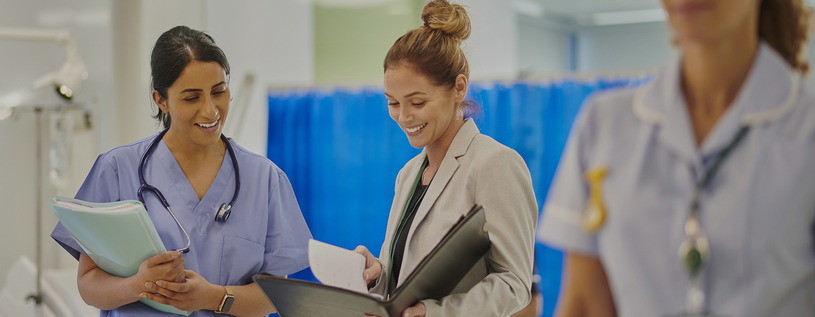The Importance of Medical Administration in Medical Care Monitoring
The Importance of Medical Administration in Medical Care Monitoring
Blog Article
Ideal Practices in Medical Management for Improving Effectiveness and Decreasing Costs
In the ever-evolving landscape of health care, the search of best techniques in medical management is vital for enhancing performance and curbing costs. By incorporating sophisticated modern technologies such as digital health documents and telemedicine, healthcare carriers can enhance operations and boost person care.
Leveraging Advanced Technology
In today's quickly developing health care landscape, leveraging sophisticated technology is no much longer optional but crucial for effective clinical administration. The integration of digital remedies into health care systems has actually transformed the means facilities run, improving procedures and improving client treatment. Electronic Health And Wellness Records (EHRs) are crucial, offering thorough patient data that can be accessed promptly by authorized employees, therefore lowering redundancy and reducing mistakes. By streamlining patient details, EHRs get rid of the requirement for difficult paperwork and assist in smooth interaction amongst doctor.
Telemedicine is an additional technical innovation that has actually changed patient communication. It offers benefit for both patients and healthcare experts by enabling remote appointments, which can reduce the requirement for in-person gos to and maximize appointment organizing. In addition, telehealth systems can expand health care accessibility to rural or underserved locations, linking voids in care shipment.
In addition, using Expert system (AI) and machine discovering is coming to be increasingly widespread in anticipating analytics, permitting early discovery of potential wellness issues and more educated decision-making. These technologies, when incorporated successfully, can boost diagnostic accuracy and individualize patient therapy strategies, ultimately bring about enhanced health care results and operational efficiency.
Optimizing Source Allowance
By purposefully handling resources such as workers, tools, and funds, medical care centers can dramatically boost their functional performance, boost individual outcomes, and lower unnecessary expenditures. The initial step in enhancing resource allotment includes performing an extensive assessment of present properties and recognizing locations where sources may be underutilized or overextended.
Prioritizing resource allocation based on client requirements and solution demands is essential. This involves aligning sources with high-demand locations, such as emergency care or specialized treatments, to make sure prompt and efficient individual care. Applying flexible staffing designs can likewise optimize labor sources by readjusting employees allocation in feedback to rising and fall person quantities. Additionally, accepting telemedicine and other technological options can alleviate physical source restrictions by providing different avenues for patient-provider interactions.
Monetary resources must be thoroughly checked and designated with critical insight to support both temporary operational needs and lasting institutional objectives. This includes investing in training programs that boost staff expertises and adopting energy-efficient methods that minimize operational expenses (medical administration). Inevitably, an optimized source appropriation technique promotes a sustainable health care atmosphere that is responsive, reliable, and monetarily prudent
Streamlining Workflow Processes
When healthcare facilities objective to enhance functional effectiveness, enhancing workflow processes comes to be a crucial emphasis. Effective process lessen redundancy, get rid of unnecessary actions, and boost control amongst health care experts. This technique not only increases service delivery however also improves the top quality of person treatment.

Following, technology combination plays a considerable duty in improving process. Applying electronic health documents (EHRs) and computerized anchor medical professional order entry (CPOE) systems lowers documentation, reduces human error, and ensures info comes to all appropriate workers. Additionally, leveraging telemedicine platforms can streamline individual consultations and follow-ups, decreasing the strain on physical facilities.

Eventually, streamlined process lead to set you back decreases and enhanced person fulfillment, promoting an extra sustainable healthcare setting.
Enhancing Data Administration
Structure upon streamlined process, maximizing data administration ends up being an important component in advancing healthcare management. Effective information administration systems are vital for keeping precise client documents, boosting decision-making, and making certain compliance with regulative standards. By applying robust data management services, medical care facilities can improve the high quality of patient care while simultaneously lowering operational costs.
One secret element of enhancing information monitoring is the assimilation of advanced electronic health document (EHR) systems. These systems promote the seamless exchange of individual info throughout different departments, decreasing duplication of tests and lessening errors. A well-designed EHR system sustains information analytics, enabling doctor to identify fads and make notified decisions relating to individual care.
Furthermore, securing person data is vital. Adopting extensive cybersecurity steps, including encryption and normal audits, ensures the integrity and confidentiality of sensitive info. This not just safeguards patients yet also maintains the establishment's online reputation.
Spending in staff training is one more vital element. Educating medical care professionals on data administration techniques enhances their capability to properly use modern technology, resulting in enhanced person results. In conclusion, boosting information management through advanced technology and detailed training is crucial for achieving performance and cost decrease in clinical administration.
Fostering Collaborative Communication
A crucial component ahead of time clinical management is promoting collaborative communication among healthcare experts. Reliable communication is vital for ensuring smooth patient treatment, maximizing therapy end results, and lessening errors. By urging open dialogue and control across multidisciplinary teams, medical care organizations can enhance their operational efficiency and decrease unneeded costs.
Central to this method is the integration of communication technologies such as electronic health and wellness records (EHRs) and protected messaging platforms, which help with the fast exchange of critical person details. These devices make it possible for doctor to access and share information in genuine time, ensuring that all employee are educated and lined up in their decision-making procedures. Routine team meetings and interdisciplinary rounds can even more advertise a culture of partnership and responsibility.
Training programs concentrated on enhancing communication skills are also essential. These programs can aid staff develop the ability to share info clearly and pay attention actively, hence minimizing misconceptions and fostering an encouraging workplace. On top of that, adopting standardized communication protocols, such as SBAR (Scenario, Background, Assessment, Referral), can streamline the exchange of info, ensuring that vital information are communicated succinctly and properly. Ultimately, promoting collective interaction leads to improved medical care shipment and price savings (medical administration).

Verdict
Incorporating sophisticated innovation, such as electronic health and wellness records and telemedicine, alongside maximized source appropriation and structured process procedures, is important for boosting efficiency in clinical administration. Effective information administration and fostering collaborative communication among medical care teams are vital for reducing redundancies and boosting treatment top quality. By prioritizing preventive treatment and taking part in top quality renovation campaigns, medical care organizations can accomplish substantial cost financial savings and boosted client end results, thereby making sure sustainable health care delivery in a progressively complex atmosphere.
Report this page